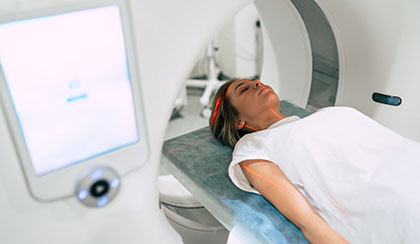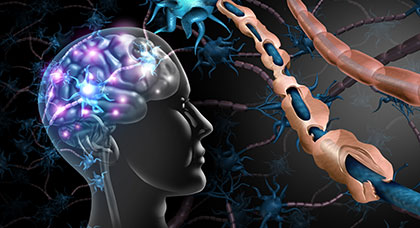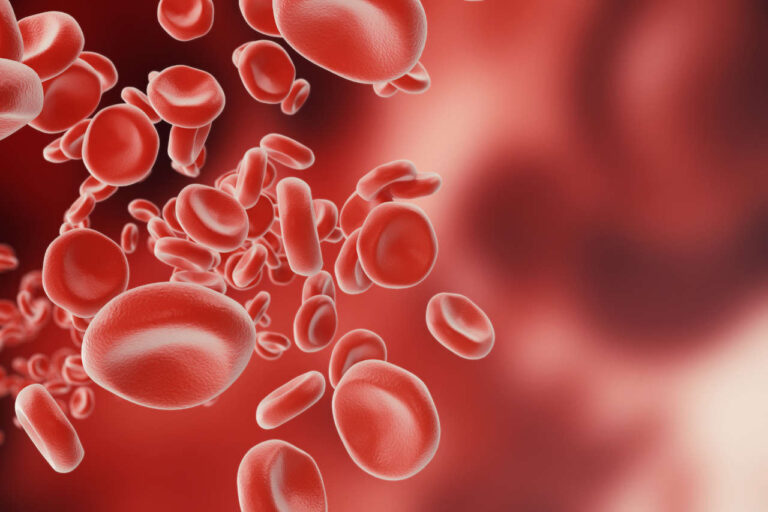
神经负责从身体各个部位传输和接收信息,然后在大脑中进行处理。它们使您能够:
- 思考
- 感觉
- 看
- 说话
许多神经都有髓鞘。 髓鞘 髓鞘是一种在神经系统中充当绝缘体的物质。神经如果磨损或受损,就会退化,从而导致大脑和身体其他部位出现问题。当包裹神经的髓鞘受损时,就会发生一种称为脱髓鞘的疾病。
获得 IVIG 事先授权
脱髓鞘可能发生于脑、脊髓或周围神经的任何部位,并与多种疾病相关。多发性硬化症 (MS) 是美国最常见的脱髓鞘疾病。
脱髓鞘疾病的治疗是通过多种医疗干预来实现的,每种干预措施都是针对所治疗的具体病症而定制的。
脱髓鞘是由什么引起的?
髓鞘包裹着周围神经以及脑、脊髓和眼神经,为这些神经提供保护,并使它们能够有效地沟通。脱髓鞘的症状是由于髓鞘耗竭而出现的。
当髓鞘缺乏或迅速耗尽时,就会出现与脱髓鞘相关的神经功能缺损,导致神经无法正常运作。
髓鞘损伤最常见的原因是炎症。其他原因包括:
- 物理压缩
- 缺氧
- 代谢问题
- 某些病毒感染
感染
脱髓鞘通常由炎症引起。炎症细胞攻击并破坏神经系统中的髓鞘。炎症可由感染或自身免疫反应引起。
毒素和感染也会导致髓鞘损伤或阻止其生成。一些营养缺乏也会导致髓鞘形成不足。
毒素暴露
髓鞘损伤可能由药物和毒素暴露引起,可能是暂时性的,也可能是永久性的。确定毒素诱发脱髓鞘的确切病因可能极其困难。一旦确定了病因,康复的关键在于将毒素暴露量降至最低。
铜缺乏症
先前的胃部手术、过量锌摄入或吸收不良(例如维生素 B12 缺乏)会导致铜水平低,从而对脊髓和周围神经产生影响。
缺乏不太可能导致脱髓鞘,但它可能在某些人的脱髓鞘疾病的发展中发挥作用。
维生素B12缺乏症
维生素B12在人体中发挥多种功能,包括协助生成髓鞘,而髓鞘对神经细胞的功能至关重要。维生素B12缺乏会导致脊柱脱髓鞘疾病以及受影响区域的周围神经病变。
缺氧
脑坏死最常见的原因是缺氧,缺氧可由心脏骤停或呼吸抑制引起。极少数情况下可观察到脱髓鞘现象。损伤程度决定了康复的可能性。
获得 IVIG 共同支付援助
与专家交谈诊断
脱髓鞘病变的诊断方法多种多样。病史和体格检查通常可以揭示疾病是否涉及大脑、脊柱、视神经或周围神经。确定脱髓鞘病变的类型、病因以及具体疾病可能需要一些时间。
临床检查
当您接受脱髓鞘疾病评估时,您的医疗保健提供者都会与您讨论您的症状持续时间、以前是否出现过以及最近是否感染过。
您的医疗保健提供者几乎肯定会询问您正在经历的任何其他症状,例如疼痛、恶心、呕吐或发烧。除了您之前患过的任何疾病外,您的医疗团队还会关注您家族的病史。
体检将评估您的肌肉力量和感觉,以及您的协调性、平衡能力和在跑步机上行走的能力。医疗保健提供者还可能检查您的视力以及瞳孔对光线的反应。
您的医疗保健提供者可能会建议您进行眼科检查,在此期间,他们会用检眼镜检查您的眼睛内部,以确定您是否 视神经炎 (视神经发炎和脱髓鞘)。
磁共振成像

磁共振成像 (MRI) 扫描可以检测脱髓鞘疾病,例如多发性硬化症和视神经炎(或视神经炎症)。
医生或许能够检测出您神经系统中影响日常功能的斑块或病变。一旦确定,医生便可以根据您体内脱髓鞘的具体来源制定治疗方案。
特殊测试
为了确定脱髓鞘对周围或视神经的影响,可以进行几项非侵入性诊断测试。
腰椎穿刺(LP)
腰穿也被称为脊椎穿刺,是一种可以让医疗团队评估患者脑脊液 (CSF) 的检查程序。根据 美国神经病学学会.
腰椎穿刺(LP)是由医护人员进行,他们会清洁您下背部的某个部位,然后插入针头并从该区域采集脊髓液。该检查需要 10 到 20 分钟,有时可能会略微不适。
诱发电位
诱发电位测试用于确定大脑对特定刺激的反应。例如,视觉诱发电位 (VEP) 常用于评估患者的视神经炎。当患者接触灯光或其他视觉刺激时,这些测试会测量大脑的反应。
肌电图(EMG)
作为神经病变评估过程的一部分,肌电图检查是必不可少的。该检查旨在确定肌肉对神经刺激的反应。检查可能会略微不适,但绝对安全,检查完成后,任何不适感都会消失。
神经传导研究(NCV)
与肌电图 (EMG) 类似,神经传导速度 (NCV) 检查用于确定体内是否存在周围神经病变。该检查用于确定神经在体内传导电信号的速度。它通过将电击电极直接放置在神经表面的皮肤上来间接刺激神经。NCV 检查可能会略微不适,但完全安全,检查完成后任何不适感都会消失。
向 IVIG 专家咨询副作用
脱髓鞘疾病分类
脱髓鞘疾病分为几类。有些药物的作用作用于大脑和脊髓,而有些药物的作用作用于周围神经。
脊髓和脑脱髓鞘疾病
多发性硬化症
多发性硬化症 (MS) 是最常见的脱髓鞘疾病,约占所有病例的四分之一。脑、脊柱和视神经的脱髓鞘是该疾病的显著特征。多发性硬化症有多种类型,有些以复发和缓解为特征,而另一些则以功能进行性衰退为特征。
多发性硬化症 (MS) 的诊断需要结合体格检查、影像学检查、腰椎穿刺 (LP) 以及偶尔进行的诱发电位测试。MS 通常在 20 至 40 岁之间发病,虽然可以治疗,但它是一种尚无已知治愈方法的慢性疾病。
进行性多灶性白质脑病(PML)
PML 是一种罕见疾病,是一种使人衰弱的脱髓鞘疾病,当病毒感染时就会发生,例如 JC病毒 病毒在神经系统中被重新激活。几乎每个人都接触过这种病毒,它会导致一些人出现轻微感冒。
病毒再激活更常见于严重免疫缺陷且脑部广泛受累的患者,这常常导致长期神经认知功能障碍。患者的病史、影像学检查以及脊髓液中JC病毒的存在均可用于诊断PML。在极少数情况下,需要进行脑活检。
加州语言语言学
儿童期脑性肾上腺脑白质营养不良 (CALD) 患儿出生时即患有一种严重的遗传性疾病。由于该病为 X 连锁隐性遗传病,主要影响男孩。患儿视力受损,肌肉控制能力也受到严重损害。由于儿童时期的代谢紊乱导致髓鞘被破坏,从而引发脱髓鞘。该病无法治愈,会导致早逝。
该疾病的一种较温和的变体, 肾上腺脊髓神经病,是由同一基因(AMN)引起的。AMN在年轻男性中更为常见,会导致进行性虚弱;它可能导致对轮椅的依赖,但不会致命。
急性播散性脑脊髓炎(ADEM)
幼儿尤其易患脱髓鞘性脑脊髓炎 (ADEM),这是一种快速进展且频繁发生的脱髓鞘疾病。通常情况下,其症状比多发性硬化症更为严重,并且病情会逐渐好转,不会产生任何长期后果或复发。
临床孤立综合征(CIS)
原发性硬化症 (CIS) 是指单次发作,但会表现出所有多发性硬化症的症状。CIS 可能是复发型多发性硬化症的首发症状,但并非总是复发。其诊断方法与多发性硬化症类似。
获取您的 IVIG 剂量
在家输液周围神经脱髓鞘疾病
格林-巴利综合征(GBS)
格林-巴利综合征(GBS) 格林-巴利综合征是一种进展迅速的疾病,始于双脚无力,并迅速蔓延至腿部和手臂。格林-巴利综合征是一种严重的疾病,因为它会削弱控制呼吸的呼吸肌。患者可能需要机械通气来支持呼吸系统。
50岁以上的成年人最容易受该病影响,其诊断通常基于临床,有时也通过肌电图/神经传导速度 (EMG/NCV) 进行。通常需要治疗格林-巴利综合征 (GBS) 静脉注射免疫球蛋白(IVIG)(一种免疫抑制疗法)或血浆置换(一种血液过滤程序)。如果及时治疗,预后通常良好。
慢性炎症性脱髓鞘性多发性神经病
CIDP 是一种复发性格林-巴利综合征,其特征是患者出现虚弱症状。发作期的治疗通常通过给予 免疫球蛋白 或通过血浆置换。
遗传性脱髓鞘性神经病
这是一组以周围神经中周围神经纤维节段性脱髓鞘为特征的遗传性神经病。 夏科-马里综合征 是一种遗传性神经病变的例子。大多数患者会逐渐出现虚弱和麻木症状,症状从小腿开始,逐渐发展到手部。
脱髓鞘疾病症状
脱髓鞘的影响可以很快显现出来。
尽管脱髓鞘可以在任何年龄发生,但某些脱髓鞘疾病在某些年龄组中比其他年龄组更常见。
脱髓鞘的症状因神经系统受累部位不同而有所差异。例如,当周围神经病变发作时,手脚会受到累及,其模式通常被称为“袜套手套”。
下背部或脊神经脱髓鞘会导致感觉变化或腿部无力,并可能损害肠道和膀胱控制。
脑脱髓鞘可导致多种问题,包括记忆力受损和视力下降。

以下是脱髓鞘疾病的一些最常见症状:
- 疲劳
- 情绪或行为变化
- 记忆力受损
- 注意力不集中
- 肠道或膀胱控制能力下降
- 言语不清
- 咀嚼或吞咽困难
- 行走困难
- 协调性下降
- 手臂或腿部无力
- 面部、手、脚、手臂或腿部麻木或刺痛
- 视力丧失或视力下降
脱髓鞘症状可能是间歇性的或进行性的,取决于病情的根本原因。
多发性硬化症的特点是发作性症状,发作间期症状会显著改善,表现形式多种多样。周围神经病变通常随着时间的推移而恶化。在某些脱髓鞘疾病中,例如 脑肾上腺脑白质营养不良但其影响并不会随着时间的推移而改善,在某些情况下甚至可能是致命的。
IVIG 有帮助吗?
免费 IVIG 治疗信息脱髓鞘的早期症状
脱髓鞘疾病患者的症状程度各不相同。然而,某些脱髓鞘症状在帕金森病患者中极为常见。
以下是您可能会注意到的一些脱髓鞘的最初迹象:
- 整体疲劳
- 异常神经痛
- 膀胱或肠道问题
- 视力丧失
脱髓鞘对神经的影响症状
鉴于神经在身体功能中发挥的关键作用,当神经受到脱髓鞘影响时,会出现各种症状,包括:
- 疲劳
- 失去膀胱和肠道控制
- 疼痛
- 记忆问题
- 心跳加速或心悸
- 头晕
- 视力模糊
- 血压控制不佳
- 失去反射能力和动作不协调
- 麻木
多发性硬化症等慢性疾病的特点是症状反复出现,并随着时间的推移逐渐恶化。
脱髓鞘的类型
脱髓鞘的发生方式多种多样。脱髓鞘有两种类型:病毒性脱髓鞘和炎性病毒性脱髓鞘。
病毒性脱髓鞘
病毒引起的脱髓鞘特征 进行性多灶性白质脑病 (PML)。JC 病毒会导致 PML。
炎性脱髓鞘
炎症性脱髓鞘是指免疫系统攻击髓鞘的过程。脑和脊髓炎症可引起多种类型的脱髓鞘,包括多发性硬化症、视神经炎和 急性播散性脑脊髓炎.
除其他外,GBS 还会引起身体其他部位周围神经的炎性脱髓鞘。
获得 IVIG 事先授权
多发性硬化症和脱髓鞘

多发性硬化症是世界上最常见的脱髓鞘疾病。根据美国国家多发性硬化症协会的数据,全球有230万人患有多发性硬化症。
多发性硬化症的特征是脑和脊髓白质脱髓鞘。免疫系统攻击髓鞘,导致病变或“斑块”的形成。随着时间的推移,许多斑块(也称为疤痕组织)会在整个脑部形成。
MS 细分为以下亚型:
- 原发性进行性多发性硬化症
- 继发性进行性多发性硬化症
- 复发缓解型多发性硬化症
- 临床孤立综合征
脱髓鞘疾病治疗
尽管脱髓鞘疾病不可逆,但新的髓鞘可以在受损区域生长。另一方面,新的髓鞘通常更干燥,再生效率更低。研究人员正在研究提高人体髓鞘再生能力的方法。
大多数脱髓鞘疾病的治疗方法是通过抑制免疫反应来发挥作用的。一些药物,包括干扰素β-1a和 醋酸格拉替雷,用于治疗这种疾病。
维生素 D 水平低会增加罹患多发性硬化症和其他脱髓鞘疾病的风险。研究表明,维生素 D 缺乏会抑制炎症免疫反应。
脱髓鞘的治疗方法多种多样,具体取决于其潜在病因。治疗目标是缓解症状,同时防止进一步脱髓鞘。目前尚无有效修复或重建髓鞘的治疗方法,但已知髓鞘可以自行再生。如果神经损伤轻微或无损伤,症状可能会消失,神经功能也有可能恢复。
有多种治疗方法可帮助预防脱髓鞘。
对症治疗
脱髓鞘疾病的特定症状可能需要治疗。例如,您可能需要药物来帮助您控制手术过程中的疼痛或不适。药物的另一个好处是它可以帮助控制焦虑或抑郁等症状。某些患者的膀胱功能障碍也可以通过药物得到缓解。
疫苗和脱髓鞘
当免疫系统因疫苗接种而激活时,可能会引发自身免疫反应。这种情况在少数免疫系统高度敏感的人群中更为常见。
一些儿童和成人在接种某些疫苗(例如流感疫苗或 HPV 疫苗)后会患上“急性脱髓鞘综合征”。
尽管 1979 年至 2014 年间已报告 71 例记录病例,但疫苗与脱髓鞘之间的关联尚未最终确定。
免疫抑制
预防炎症过程对于治疗多种脱髓鞘疾病至关重要,包括多发性硬化症、急性播散性脑脊髓炎 (ADEM) 和 金标准. 多种此类疾病都可以通过短期静脉注射(IV)类固醇或血浆置换疗法成功治疗。
疾病改良疗法 由于多发性硬化症是一种慢性疾病,因此DMT(二甲双胍)可用于治疗该病。类固醇和DMT通过抑制免疫系统发挥作用,从而阻止髓鞘的炎症攻击。
获得 IVIG 共同支付援助
与专家交谈补充剂
由于某些营养缺乏(例如维生素 B12 和铜的缺乏)与脱髓鞘有关,因此恢复正常营养水平可能是成功治疗策略的关键组成部分。
他汀类药物
虽然一些研究没有发现他汀类药物对中枢神经系统或髓鞘再生有任何影响的证据,但其他研究发现了他汀类药物有影响的证据。
目前,大多数证据表明他汀类药物治疗对中枢神经系统髓鞘再生无害。尽管如此,他汀类药物对认知功能的影响目前仍在很大程度上未知。
避免毒素
虽然戒除毒素不太可能使您的症状恢复正常,但它可能有助于防止进一步的神经损伤发生。
康复
康复治疗的需求常常使康复过程更加复杂。各种康复技术,例如物理治疗、言语或吞咽治疗以及平衡疗法,都可以用来帮助脱髓鞘疾病的恢复或适应。
结论
脱髓鞘病变的发生原因多种多样,脱髓鞘疾病有多种类型,每种类型都有其独特的发病年龄、症状、病因、治疗和预后。脱髓鞘疾病可根据其严重程度和持续时间进行分类。
脱髓鞘疾病初期可能会带来剧烈疼痛且难以控制。然而,患有多发性硬化症和其他常见疾病的人仍然有可能过上健康的生活。
目前,一些令人振奋的新研究正在进行,旨在确定脱髓鞘的病因以及如何治疗髓鞘退化的生物学原因。此外,脱髓鞘引起的疼痛的治疗也取得了进展。
脱髓鞘疾病并非总是可治愈或可逆的。不过,您可以与您的医疗保健提供者讨论药物和其他治疗方法,以更好地了解您的病情。
您对自身病情了解得越多,就越能有效缓解症状。例如,养成更健康的生活方式,就能更有效地控制疼痛。因此,如果您或您的亲人被诊断出患有脱髓鞘疾病,您可以放心,在绝大多数情况下,脱髓鞘疾病是可以治愈的。













